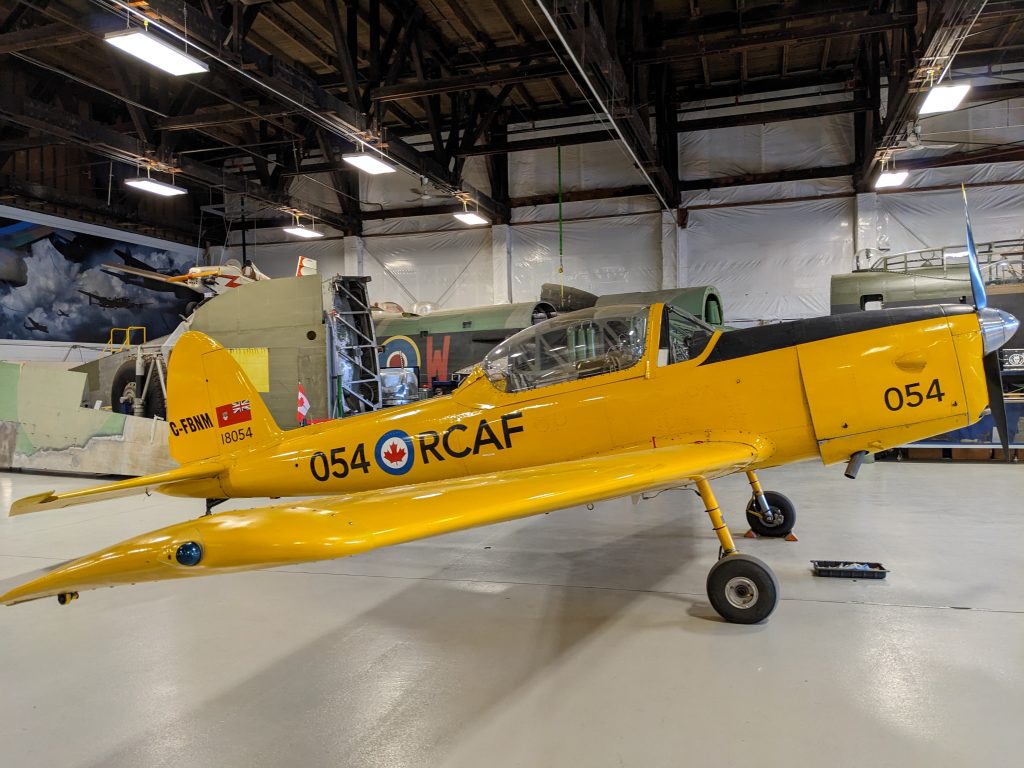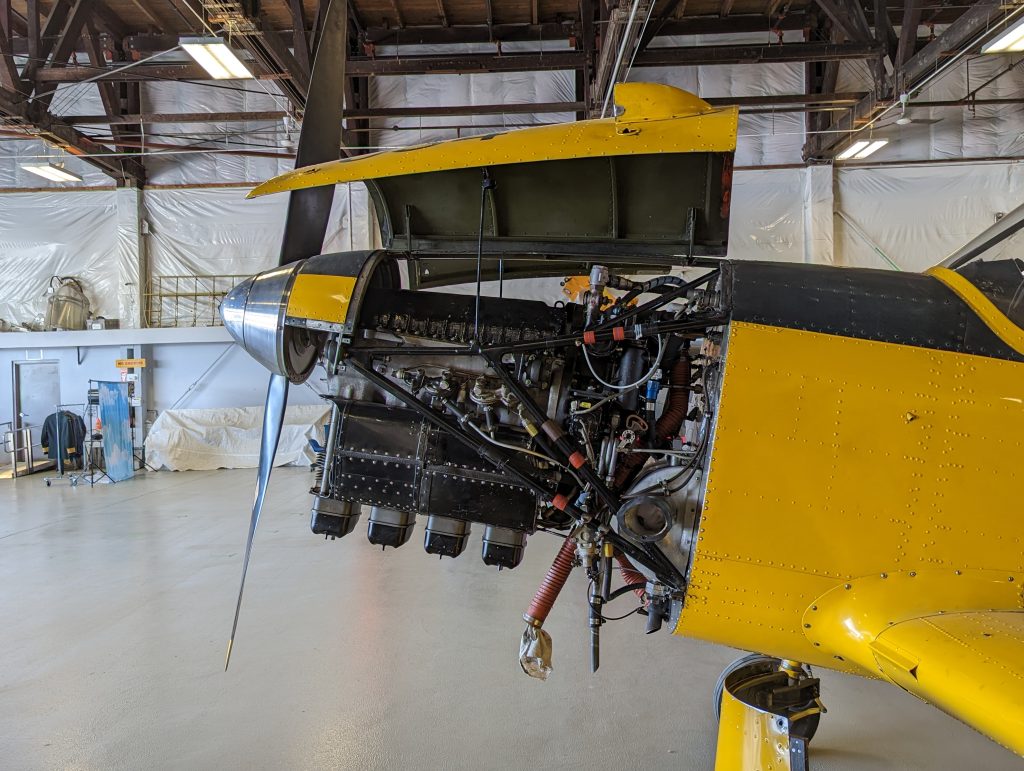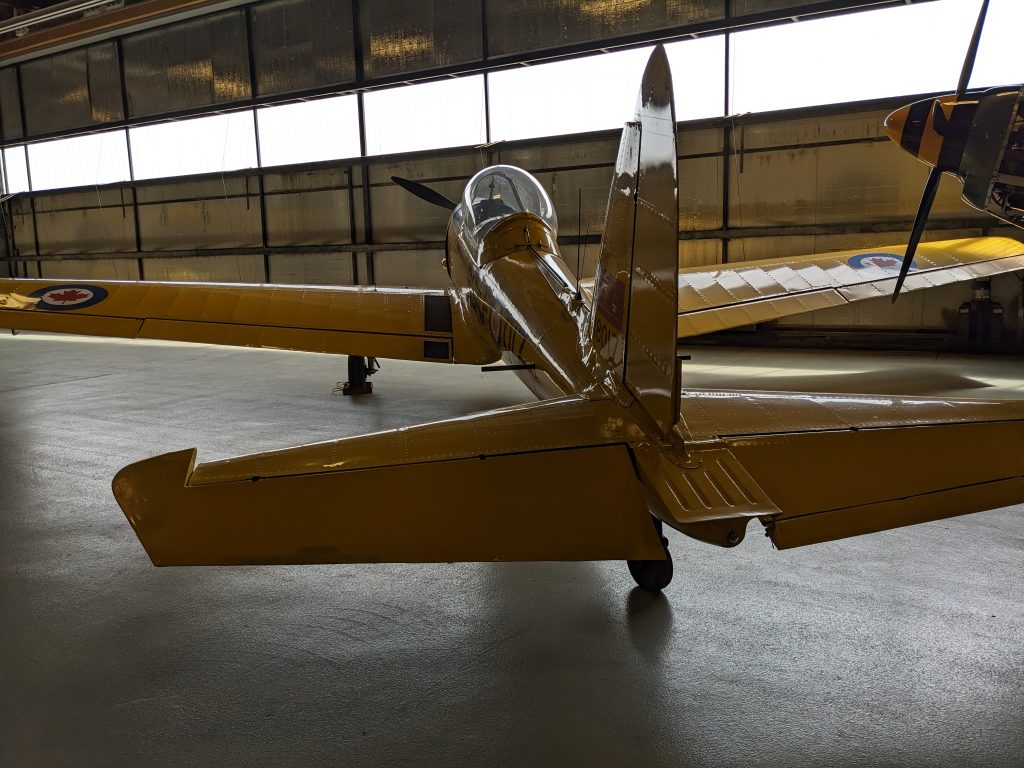de Havilland Canada DHC-1 Chipmunk

Aircraft Details
- Length: 25 ft. 5in. (7.75 m)
- Wingspan: 34 ft. 4in. (10.47 m)
- Height: 7 ft. (2.1 m)
- Basic Empty Weight: 1517 lbs. (646 kg)
- Loaded Weight: 2014 lbs. (953 kg)
- Max Take Off Weight: 2200 lbs. (998 kg)
- Crew: 2 – (1 student & 1 instructor)
- Max Speed: 120 knots, (222 km/h)
- Cruise Speed: 90 Knots
- Range: 225 Nautical Miles (445 km)
- Service Ceiling: 15,800 ft. (5200 m)
- Rate of Climb: 900 ft/min (274 m/min)
- Wing Loading: 11.709 lb/ft2
- Power/Mass: 13.889 hp/lb
Aircraft Description
- Standard primary trainer used by the RCAF through much of the post WWII years. Ours are 1950 models.
- The deHavilland Chipmunk was the first true postwar aviation project of deHavillland Canada
- Replacement for deHavilland Tiger Moth trainer
- Over 500 in airworthy condition today.
- Metal construction with fabric on flying surfaces
- CF-DIO-X, the chipmunk prototype, flew for the first time at Downsview, Toronto on May 22 1946
- The production version of the airplane was powered by a 145 hp (108 KW) in-line de Havilland Gypsy major 8 engine
- Quirky fact…..The Gypsy Major engine is converted from a tractor engine and mounted upside down to allow the propeller to clear the ground when operating.
- Chippies (Chipmunks) served actively from 1948 until 1972
- The de Havilland plant at Downsview built 217 aircraft, the last in 1956
- From 1950’s onwards, the Chipmunk also became a popular civilian aircraft, being used for training, aerobatics, and crop spraying. (most civilian aircraft are ex-military)
‘Peril Yellow’ was the colour of all training aircraft. (clearly identifies student pilot…give room – Common with all commonwealth trainers)


